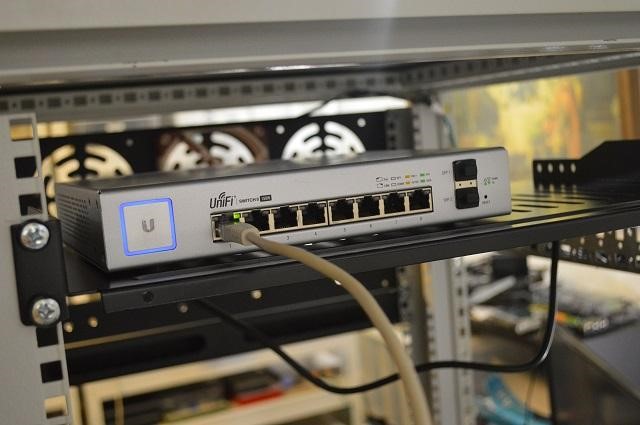
What Is a Wide Area Network?
A wide area network (WAN) is a large network of not tied to a single location. WANs allows devices from around the world to communicate and share information.

A local area network (LAN) consists of a series of computers linked together to form a network in a circumscribed location. The computers in a LAN connect to each other via TCP/IP ethernet or Wi-Fi. A LAN is normally exclusive to an organization, such as a school, office, association or church.
LAN began in the ether. Not the 19th century concept of a mysterious, invisible medium between the sun and the Earth that conducts light — that’s Aether; however, it’s not far off to think about LAN and Aether in the same context.
Here’s a timeline that will tell you why:
Dr. Robert M. Metcalfe invented the Ethernet in 1973. His job was to network all the computers in a building to each other and to the world’s first Xerox laser printer. In a memo, he named the networking method “Ethernet” because the huge coaxial cable that would connect the computers to each other reminded him of the Aether concept.
Metcalfe’s idea was informed by ARPANET — the original internet developed by the U.S. Department of Defense— and the ALOHAnet, which was a packet-switching wireless radio network for computers developed by the University of Hawaii.
The Ethernet allowed computers to send packets of data through a coaxial cable to communicate with each other and the printer. It employed a collision-detection scheme. If nodes in the network fired at the same time, causing a collision, the mainframe wouldn’t respond and the nodes would then wait a random number of milliseconds to fire again.
Four years later, Datapoint Corp. installed the first commercial LAN at Chase Manhattan Bank in New York. Unlike Metcalfe’s Ethernet, Datapoint’s LAN used the Attached Resource Computer (ARC) network. While Ethernet employed collision-detection, ARC employed a token-passing scheme to avoid simultaneous transmissions by nodes. In other words, the nodes took turns transmitting signals instead of relying on random retransmission. Other companies, such as IBM, adopted the token-passing scheme to battle Ethernet for LAN supremacy throughout the ‘80s.
Metcalfe started 3Com to develop and sell Ethernet products.
Ethernet became the Institute of Electrical and Electronics Engineers’ (IEEE) standard for LAN.
Ethernet had won the LAN battle, in part by switching to a twisted pair cable, which reduces crosstalk and electromagnetic induction. In other words, Ethernet was faster.
The IEEE started working on wireless LAN (WLAN), which is based on the ALOHAnet prototype.
IEEE released the 802.11 (Wi-Fi) standard.
Instead of collision-detection, Wi-Fi employs a wait-and-see carrier sense multiple access/collision avoidance (CSMA/CA) scheme. A Wi-Fi device listens to radio waves broadcast by the LAN for a random amount of time, and when the network is idle, the device transmits a signal (frame). When the receiver gets the frame intact, it sends back an acknowledgement (ACK) to the sender. Wireless LANs (WLANs) and LANs can access the internet or wide area networks (WANs) through a gatewayA wide area network (WAN) is a series of LANs linked together to form a network in an extended area. WANs are typically operated by telecommunications companies or businesses that need a network comprising multiple remote locations. The internet itself
is a WAN.
Fiber optic cable is the preferred transmission medium for WANs because fiber optic can transmit large amounts of data at high speeds. As is the case with the internet, a WAN can also include metropolitan area networks (MANs).
A LAN server, or file server, is a specialized, high-speed computer that houses the application programs and files for computers on a network. A network administrator grants user access to apps and files on a LAN server. LAN users can download apps and files to access them directly from the hard drive of their device.
Today, asking whether you should use a LAN Ethernet connection or a Wi-Fi connection is like asking whether you want consistency or convenience. Gigabit Ethernet is capable of consistently transmitting data at speeds of 1000 Mbps and Fast Ethernet can handle 100 Mbps. In comparison, the newest Wi-Fi standards operate as follows:
The latter two standards are a great deal faster than Gigabit Ethernet, but Lifewire’s Bradley Mitchell contends that these theoretical Wi-Fi speeds do not match up with the actual speeds you’ll experience. Still, WLANs allow you to move around conveniently with laptops and smartphones in the area. You won’t experience the consistent speed of Ethernet, but you will get fairly high speeds and convenience with today’s technology.
To build a LAN or WLAN, you need the following:
Setting up a LAN, WLAN or WAN can be very complex depending on the size of the organization. Preparing for and earning an IT certification like CompTIA Network+ will prove to employers you have the skills needed to administer computer networks.
CompTIA Network+ covers computer networking topics including setting up LANs. Download the exam objectives to see all the topics covered by this IT certification.
Read more about Computer Networks.
Tags : Computer Networks